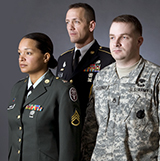
| RANK INSIGNIAS - SOLDIERS & NCO's |
| OZNAKE ČINOVA VOJNICI I PODOFICIRI |
| ARMY | AIR FORCE | NAVY | MARINES |
| PRIVATE (no insignia) | AIRMAN BASIC (no insignia) | SEAMAN RECRUIT (no insignia) | PRIVATE (no insignia) |
| Vojnik regrut (nema oznaku) | Zrakoplovac regrut | Mornar regrut (nema oznaku) | Vojnik (bez oznake) |
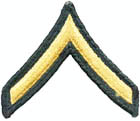 |
 |
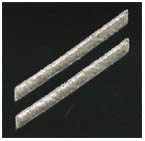 |
 |
| PRIVATE 2 | AIRMAN | SEAMAN APPRENTICE | PRIVATE FIRST CLASS |
| Vojnik | Zrakoplovac | Mornar pripravnik | Vojnik prve klase |
|
PRIVATE (PVT/PV2) (Addressed as "Private") Lowest rank: a trainee who’s starting Basic Combat Training (BCT). Primary role is to carry out orders issued to them to the best of his/her ability. (PVT does not have an insignia) |
|||
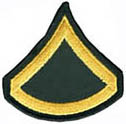 |
 |
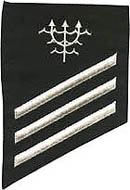 |
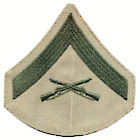 |
| PRIVATE FIRST CLASS | AIRMAN 1st CLASS | SEAMAN | LANCE CORPORAL |
| Vojnik prve klase | Zrakoplovac prve klase | Mornar | Razvodnik |
|
PRIVATE FIRST CLASS (PFC) (Addressed as "Private") PV2s are promoted to this level after one year—or earlier by request of supervisor. Individual can begin BCT at this level with experience or prior military training. Carries out orders issued to them to the best of his/her ability. |
|||
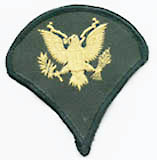 |
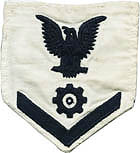
Engineman / strojar |
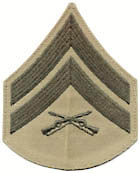 |
|
| SPECIALIST | PETTY OFFICER 3rd class | CORPORAL | |
| Vojnik specijalist | Podoficir 3.klase | Kaplar | |
|
SPECIALIST (SPC) (Addressed as "Specialist") Can manage other enlisted Soldiers of lower rank. Has served a minimum of two years and attended a specific training class to earn this promotion. People enlisting with a four year college degree can enter BCT as a Specialist. |
|||
 |

 SENIOR AIRMAN or |
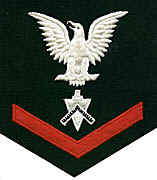 Builder / građevinac
Builder / građevinac |
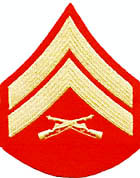 |
| CORPORAL | SERGEANT | PETTY OFFICER 3rd class | CORPORAL |
| Kaplar | Stariji zrakoplovac ili narednik | Podoficir 3.klase | Kaplar |
|
CORPORAL (CPL) (Addressed as "Corporal") The base of the Non-Commissioned Officer (NCO) ranks, CPLs serve as team leader of the smallest Army units. Like SGTs, they are responsible for individual training, personal appearance and cleanliness of Soldiers. |
|||
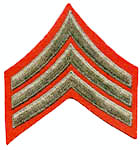 |
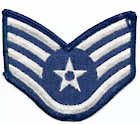 |
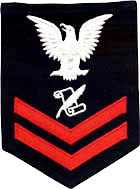
Journalist / novinar |
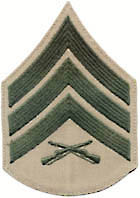 |
| SERGEANT | STAFF SERGEANT | PETTY OFFICER 2nd class | SERGEANT |
| Narednik | Štabni narednik | Podoficir 2.klase | Narednik |
|
SERGEANT (SGT) (Addressed as "Sergeant") Typically commands a squad (9 to 10 Soldiers). Considered to have the greatest impact on Soldiers because SGTs oversee them in their daily tasks. In short, SGTs set an example and the standard for Privates to look up to, and live up to. |
|||
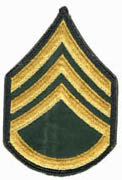 |
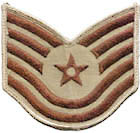 |
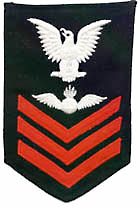
Aviation ordnanceman |
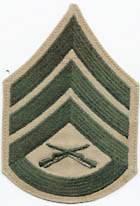 |
| STAFF SERGEANT | TECHNICAL SERGEANT | PETTY OFFICER 1st class | STAFF SERGEANT |
| Štabni narednik | Tehnički narednik | Podoficir 1.klase | Štabni narednik |
|
STAFF SERGEANT (SSG) (Addressed as "Sergeant") Also commands a squad (9 to 10 Soldiers). Often has one or more SGTs under their leadership. Responsible for developing, maintaining and utilizing the full range of his Soldiers' potential. |
|||
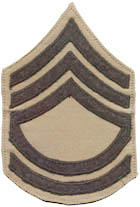 |
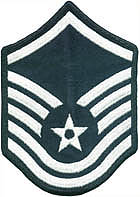 |
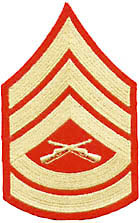 |
|
| SERGEANT 1st class | MASTER SERGEANT | CHIEF PETTY OFFICER | GUNNERY SERGEANT |
| Narednik prve klase | Glavni narednik | Glavni podoficir | Artiljerijski narednik |
| SERGEANT FIRST CLASS (SFC) (Addressed as "Sergeant") Key assistant and advisor to the platoon leader. Generally has 15 to 18 years of Army experience and puts it to use by making quick, accurate decisions in the best interests of the Soldiers and the country. | |||
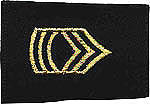 |
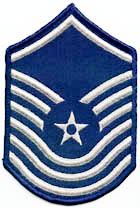 |
||
| MASTER SERGEANT | SENIOR MASTER SERGEANT | SENIOR CHIEF PETTY OFFICER | MASTER SERGEANT |
| Glavni narednik | Stariji glavni narednik | Stariji šef podoficir | Glavni narednik |
| MASTER SERGEANT (MSG) (Addressed as "Master Sergeant") Principal NCO at the battalion level, and often higher. Not charged with all the leadership responsibilities of a 1SG, but expected to dispatch leadership and other duties with the same professionalism. | |||
 |
|||
| FIRST SERGEANT | FIRST SERGEANT | FIRST SERGEANT | |
| Prvi narednik | Prvi narednik | Prvi narednik | |
|
FIRST SERGEANT (1SG) (Addressed as "First Sergeant") Principal NCO and life-blood of the company: the provider, disciplinarian and wise counselor. Instructs other SGTs, advises the Commander and helps train all enlisted Soldiers. Assists Officers at the company level (62 to 190 Soldiers). |
|||
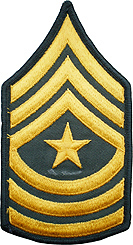 |
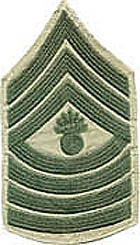 |
||
| SERGEANT MAJOR | CHIEF MASTER SERGEANT | MASTER CHIEF PETTY OFFICER | MASTER GUNNERY SERGEANT |
| Stariji narednik | Šef glavni narednik | Stariji glavni podoficir | Glavni artiljerijski narednik |
|
SERGEANT MAJOR (SGM) (Addressed as "Sergeant Major") SGMs experience and abilities are equal to that of the CSM, but the sphere of influence regarding leadership is generally limited to those directly under his charge. Assists Officers at the battalion level (300 to 1,000 Soldiers). |
|||
 |
|||
| COMMAND SERGEANT MAJOR | SERGEANT MAJOR | ||
| Komandni stariji narednik | Stariji narednik | ||
| COMMAND SERGEANT MAJOR (CSM) (Addressed as " Command Sergeant Major") Functioning without supervision, a CSM’s counsel is expected to be calm, settled and accurate—with unflagging enthusiasm. Supplies recommendations to the commander and staff, and carries out policies and standards on the performance, training, appearance and conduct of enlisted personnel. Assists Officers at the brigade level (3,000 to 5,000 Soldiers). | |||
| SERGEANT MAJOR of the ARMY | CHIEF MASTER SERGEANT of the AIR FORCE | MASTER CHIEF PETTY OFFICER of the NAVY | SERGEANT MAJOR of the MARINE CORPS |
| Armijski stariji narednik | Zrakoplovni glavni narednik | Mornarički stariji glavni podoficir | Stariji marinski artiljerijski narednik |
|
SERGEANT MAJOR OF THE ARMY There’s only one Sergeant Major of the Army. This rank is the epitome of what it means to be a Sergeant and oversees all Non-Commissioned Officers. Serves as the senior enlisted advisor and consultant to the Chief of Staff of the Army (a four-star General). |
|||
|
Service members in pay grades E-1 through E-3 are usually either in some kind of training status or on their initial assignment. The training includes the basic training phase where recruits are immersed in military culture and values and are taught the core skills required by their service component. Basic training is followed by a specialized or advanced training phase that provides recruits with a specific area of expertise or concentration. In the Army this area is called a military occupational specialty (MOS) For rank and precedence within the Army, specialist ranks immediately below corporal. Among the services, however, rank and precedence are determined by pay grade. Specialists who have demonstrated leadership abilities and are serving in Sergeant positions can be promoted to Corporals. This signifies that they hold a leadership position, and are held to the responsibilities and authorities inherent in that role. These individuals either do not have enough "Time in grade" to be promoted, or have not yet had a chance to go to the Primary Leadership Development Course. Leadership responsibility significantly increases in the midlevel enlisted ranks. This responsibility is given formal recognition by use of the term noncommissioned officer (NCO). Army Corporals and Sergeants are considered NCO ranks. At the E-8 level, the Army have two positions at the same pay grade. Whether one is a Master Sergeant or a first sergeant in the Army depends on the person's job. A Master Sergeant works in a staff position, whereas a First Sergeant is responsible for a Company of soldiers. The same is true for the positions at the E-9 level (SGM and CSM), except that they are at a Battalion or higher level. Army Sergeant Majors and Command Sergeant Majors receive the same pay but have different responsibilities. All told, E-8s and E-9s have 15 to 30 years on the job, and are commanders' senior advisers for enlisted matters. A third E-9 element is the senior enlisted person of the Army. The sergeant major of the Army is the spokespersons of the enlisted force at the highest levels of their services. |
|||






